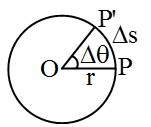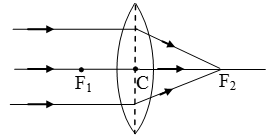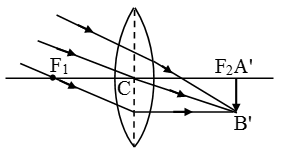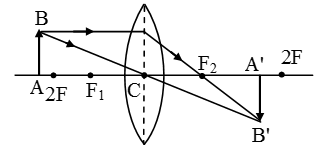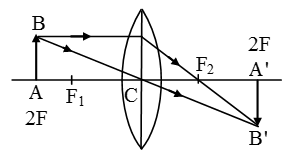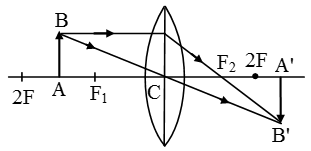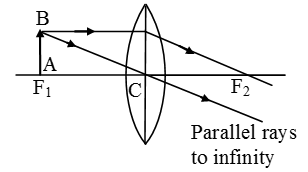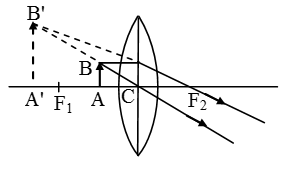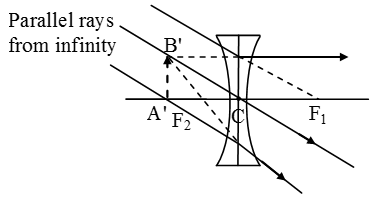How Do You Measure Density
- \(\text{Density}=\frac{\text{Mass}}{\text{Volume}}\text{ or d}=\frac{\text{M}}{\text{V}}\)
- SI unit of density is kg/m3 and CGS unit of density is g /cm3
- 1 gm/cm3 = 1000 kg/m3
- Different substances have different densities which gets affected by temperature.
- Respective density of a substance decreases on heating due to the expansion of the substance.
- Water has anomalous expansion. When water is cooled at 4ºC, its volume decreases but on further cooling its volume starts increasing.
- The density of water is maximum at 4ºC.
Relative Density
Relative density of a substance
\( =\frac{\text{density}\,\text{of}\,\text{subs}\,\text{tance}}{\text{density}\,\text{of}\,\text{water}\,\text{at}\,\text{4 }\!\!{}^\circ\!\!\text{ C}} \)
\( =\frac{\text{mass}\,\text{of}\,\text{unit}\,\text{volume}\,\text{of}\,\text{subs}\,\text{tance}}{\text{mass}\,\text{of}\,\text{unit}\,\text{volume}\,\text{of}\,\text{water}\,\text{at}\,\text{4 }\!\!{}^\circ\!\!\text{ C}} \)
\( =\frac{\text{mass}\,\text{of}\,\text{certain}\,\text{volume}\,\text{of}\,\text{subs}\,\text{tance}}{\text{mass}\,\text{of}\,\text{same}\,\text{volume}\,\text{of}\,\text{water}\,\text{at}\,\text{4 }\!\!{}^\circ\!\!\text{ C}} \)
\( =\frac{\text{weight}\,\text{of}\,\text{certain}\,\text{volume}\,\text{of}\,\text{subs}\,\text{tance}}{\text{weight}\,\text{of}\,\text{same}\,\text{volume}\,\text{of}\,\text{water}\,\text{at}\,\text{4 }\!\!{}^\circ\!\!\text{ C}} \)
Unit of Relative Density:
It has no units.
Note: density of water in CGS system is 1 gm/cm3.
Relative Density for solids:
\(\text{Relative Density}=\frac{{{W}_{1}}}{{{W}_{1}}-{{W}_{2}}}\)
Where W1 = weight of solid body in air
W2 = weight of solid body in water
Relative Density for liquids:
\(\text{Relative Density}=\frac{W-W”}{W-W’}\)
Where,
W’ = weight of the body fully immersed in water
W” = weight of the body fully immersed in liquid.
W = weight of the body in air
Relative Density Example Problems With Solutions
Example 1: A body weighs 30 N in air and 26 N when fully immersed in water. Calculate its relative density.
Solution: Given: Weight of body in air, W1 = 30 N
Weight of body in water, W2 = 26 N
\(\text{(iii) Relative Density}=\frac{{{W}_{1}}}{{{W}_{1}}-{{W}_{2}}}\)
\(=\frac{30}{30-26}=7.5\)
Example 2: Relative density of copper is 8.8. What is its density in SI system?
Solution:
\(\text{Relative density}=\frac{\text{density}\,\text{of}\,\text{copper}}{\text{density}\,\text{of}\,\text{water}}\)
∴ Density of copper = R.D. × density of water
= 8.8 × 103 kg/m3
Example 3: A solid weighs 60 gmf in air and 52 gmf when completely immersed in water. Calculate the following
(i) upthrust,
(ii) volume of the solid,
(iii) relative density of the solid
Solution: Given:
Weight of solid in air = 60 gmf
Weight of solid in water = 52 gmf
∴ Loss of weight in water = 60 – 52 = 8 gmf
(i) ∴ Upthrust = loss of weight in water = 8 gmf
(ii) Since density of water is 1 gm/cm3, and weight of equal volume of water = 8 gmf
∴ Volume of solid = 8 cm3
\(\text{(iii) Relative Density of solids}=\frac{{{W}_{1}}}{{{W}_{1}}-{{W}_{2}}}\)
\(=\frac{60}{60-52}=7.5\)

